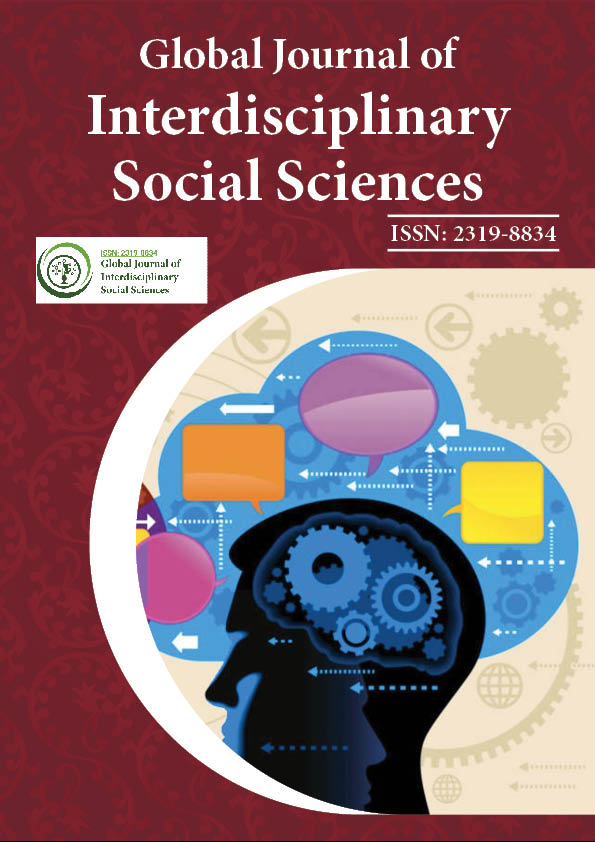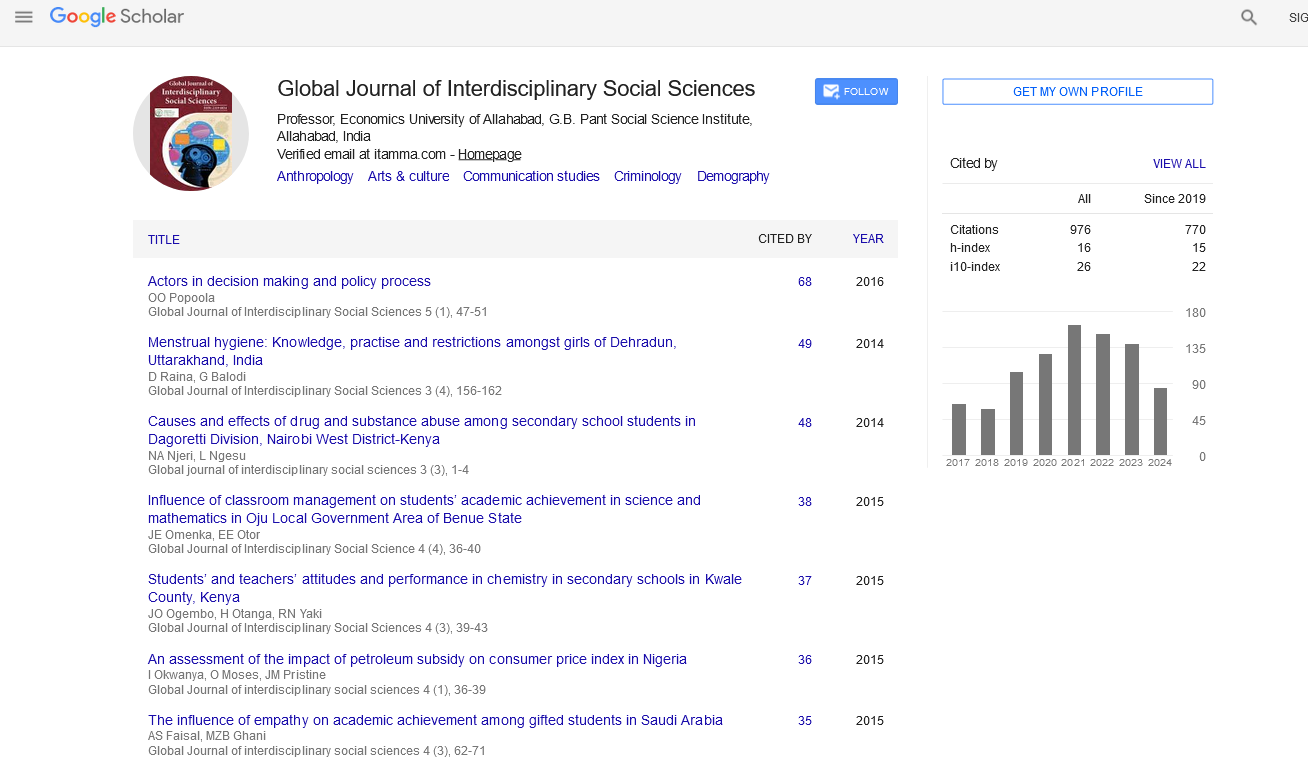Indexed In
- JournalTOCs
- Google Scholar
Useful Links
Share This Page
Journal Flyer

Open Access Journals
- Agri and Aquaculture
- Biochemistry
- Bioinformatics & Systems Biology
- Business & Management
- Chemistry
- Clinical Sciences
- Engineering
- Food & Nutrition
- General Science
- Genetics & Molecular Biology
- Immunology & Microbiology
- Medical Sciences
- Neuroscience & Psychology
- Nursing & Health Care
- Pharmaceutical Sciences
Short Communication - (2022) Volume 11, Issue 5
Effects of Cyber Crime in India
Zadwick Mell*Received: 02-Sep-2022, Manuscript No. GJISS-22-18450; Editor assigned: 05-Sep-2022, Pre QC No. GJISS-22-18450 (PQ); Reviewed: 20-Sep-2022, QC No. GJISS-22-18450; Revised: 26-Sep-2022, Manuscript No. GJISS-22-18450 (R); Published: 04-Oct-2022, DOI: 10.35248/2319-8834.22.11.034
Description
In modern times most of the human activities tend to depend more and more on technology, especially the information technology. It goes without saying that human beings have an edge over all forms of life on the earth, as they are bestowed with the ability to think, analyze and act accordingly. Humans have the capability to adapt themselves to any circumstance and the concept of 'survival of the fittest' made them to strive to achieve their goals lawfully and unlawfully. Historically speaking, power has never been in the hands of any single individual or a group of individuals for long. The society tends to revolve around those who are the center of the power. When man started living in habitations, power was concentrated in the hands of land owners and that became the backbone of the agrarian society [1,2].
With the advent of industrialization in the eighteenth century, the power got shifted into the hands of a few industrialists and it was measured in terms of money. Printing technology slowly and steadily transferred knowledge unto the haves and have-nots. In the twenty first century, power is now being evaluated in terms of information and knowledge one possesses [3]. We are in the midst of an information revolution that the world has never seen before. Information storage and information access has been greatly simplified, first with the advent of computers and then with the emergence of computer networking. Information technology is an outcome of the synthesis of computer and the communication technology, during the last decade, which has resulted in elimination of the constraints of distance and time in communication.
Cyber world is the combination of computers and other communication convergence technologies. It raises complex problems for traditional laws. Traditional laws are to be applied in superhighway with new spectacle. But these laws are not adequate in cyberspace always. Cyberspace has no specific location which is another problem in contemporary legal system. Cyber world is the world without specific boundaries where people with a keyboard and mouse by single click can visit whole world, can speak with anyone they wish, can see any one they wish, even thousands of miles away, they can have online discussion with each other, exchange their views, sell and purchase things, access banking facilities, create information and exchange information online [4].
Conclusion
Finally, the internet, the network of computer networks, provided an efficient method of near instantaneous exchange of information across the globe and the world literally became global village. Information technology is assumed to be the largest contributor to the shift of power in the hands of those possessing information. The information revolution has brought radical transformation in the society and hurdles like distance and money are no more hindrances for accessing knowledge. Advent of the internet has enabled the weaker and the have-nots to reach for the opportunities, they never dreamt of. This technology has impacted the world more than any other technology, as its use is visible in almost every sphere of life and as a matter of fact it has become indispensable. Information technology has thus become a valuable source for development, commerce, communication, entertainment, companionship and adventure.
REFERENCES
- Bottazzi G, Me G. Responding to cyber crime and cyber terrorism—botnets an insidious threat. InCyber Crime and Cyber Terrorism Investigator's Handbook. 2014; 231-257.
[Crossref] [Google Scholar].
- Maheshwari H, Hyman HS, Agrawal M. A Comparison of Cyber-Crime Definitions in India and the United States. InCyber Security, Cyber Crime and Cyber Forensics: Applications and Perspectives. 2011; 33-45.
[Crossref] [Google Scholar].
- Santanam R, Sethumadhavan M, Virendra M. Cyber Security, Cyber Crime and Cyber Forensics: Applications and Perspectives. IGI Global; 2010.
- Halder D, Jaishankar K. Cyber Crime Against Women and Regulations in Australia. InCyber Crime: Concepts, Methodologies, Tools and Applications. 2012; 757-764. IGI Global.
[Crossref] [Google Scholar].
Citation: Mell Z (2022) Effects of Cyber Crime in India. Global J Interdiscipl Soc Sci. 11:034.
Copyright: © 2022 Mell Z. This is an open-access article distributed under the terms of the Creative Commons Attribution License, which permits unrestricted use, distribution, and reproduction in any medium, provided the original author and source are credited.

